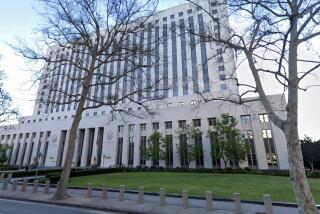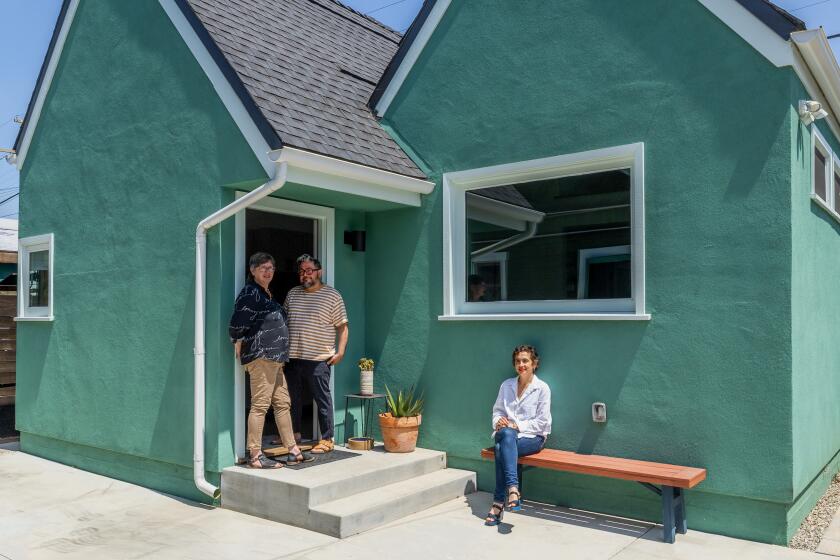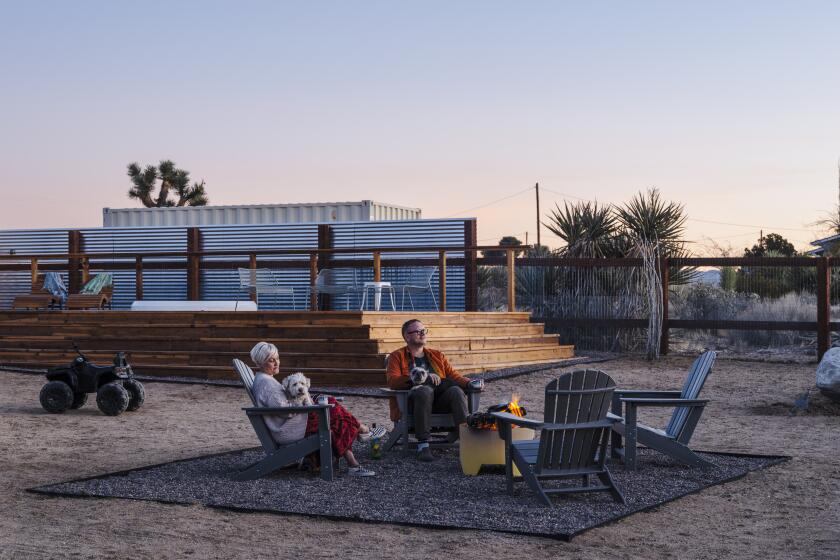City Vote Gives Preservationists Mixed Feelings
In the first warm glow after a surprising unanimous vote, it appeared preservationists had finally won: The City Council had granted historic landmark designation for the striking old Civic Center on Hillcrest Drive.
But Wednesday, advocates acknowledged the victory could be undermined by the council’s decision--just moments later--to allow development on the hillside.
Also, the landmark designation affords little protection, beyond a requirement to provide 180 days’ notice before tearing down the twin trapezoidal buildings.
“They said very loudly how they loved the buildings, then when the lights dimmed and the people went away they went back to business as usual,” preservationist William Maple said. “You can’t talk out of both sides of your mouth.”
After an emotional public hearing Tuesday night that included the architect’s children pleading to save the buildings, the City Council--acting as the city’s Cultural Heritage Board--voted to designate as a landmark the facade of the city’s first structure built as a civic center.
Led by its pro-business majority, the council then voted 3 to 2 to rezone the site. Convalescent homes and assisted-living communities for the elderly will most likely be built on portions of the city-owned property rather than more ambitious projects, such as restaurants or other commercial development.
“I think it was a win-win for everybody,” Mayor Judy Lazar said. “The zoning change was not unanimous, but I think it was a good decision.”
Lazar said the council’s vote for the moderate development options means all the oak trees on the property will not be touched.
“The changes involved will allow that all the oak trees will be preserved and it will allow for the preservation of the dedicated trees,” she said.
Although the landmark designation officially recognizes the importance of the site to the history and culture of the greater Conejo Valley, it does not prevent demolition of the two buildings in the future.
“To be consistent with the vote we just made to consider the buildings a local historical landmark, I think the right thing to do is say we won’t demolish them,” Councilwoman Elois Zeanah said during Tuesday night’s meeting.
Other council members said they had no plans to raze the buildings. “I don’t want to see that, and I don’t think anyone else does on the council,” Lazar said.
Still, they said the option should be kept open to allow for construction of a school or other project deemed to be an asset to the community in the future.
Since the landmark designation only protects the outside appearance of the old Civic Center, its interior, which had been gutted several years ago for asbestos removal and then ravaged by vandals, can be modified to suit the needs of new tenants.
Retrofitting of the buildings with safety glass windows and ramps for wheelchair access to bring them up to current codes will also be permitted.
Maple, a museum exhibit designer who worked two years to get 401 W. Hillcrest Drive recognized as a local historical landmark, said he has mixed feelings about the council’s decisions Tuesday.
Although the two buildings now have a better chance of surviving, proposed development on the flatter portions of the 62-acre site will violate its overall integrity and the vision of its architect, the late Robert Mason Houvener, Maple said.
Houvener won a $10,000 award from the city in 1969 for his design of the two gently curving trapezoidal buildings, nicknamed the “eyebrows on the hill.”
“The reason the buildings won a design award is because they were unobtrusive,” Maple said. “Any development would not be in the spirit of that award.”
An amendment by Councilwoman Linda Parks to require future buildings to be consistent with the old Civic Center’s master plan was voted down.
Another amendment suggested by Parks to limit housing density on the site to a maximum of seven units an acre instead of 20 units was withdrawn after failing to muster support.
That disappointed many residents of the Oaknoll Villas adult community who wanted the council to limit development.
Oaknoll Villas, which is across the street from the old Civic Center, is home to more than 600 residents, mostly retirees, who also fear their health may be jeopardized by future construction.
“Pollution, noise and bright lights tend to make seniors tense, and stress weakens the health of elderly people,” said Marcia Morocco, a member of Oaknoll Villas’ board of directors.
But the council’s decision favoring the construction of affordable housing for senior citizens was the best course considering the other options, Morocco said.
Recognition of the buildings as a landmark did little to satisfy Houvener’s daughters, who are also concerned about the buildings’ shabby condition.
“It was his baby. He always said he had three children, myself, my sister and Thousand Oaks,” said the architect’s younger daughter, Heidi Gest, of Seattle. “If he were alive today, he’d die looking at it.”
More to Read
Sign up for Essential California
The most important California stories and recommendations in your inbox every morning.
You may occasionally receive promotional content from the Los Angeles Times.






